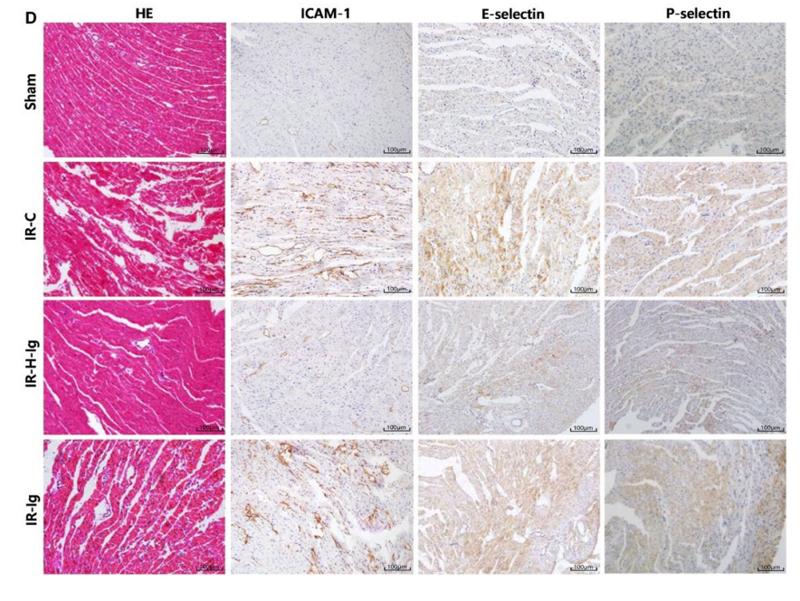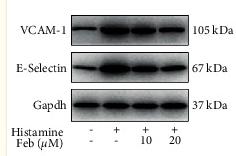SELE/CD62E Antibody - #DF6914
| Product: | SELE/CD62E Antibody |
| Catalog: | DF6914 |
| Description: | Rabbit polyclonal antibody to SELE/CD62E |
| Application: | WB IHC IF/ICC |
| Cited expt.: | WB, IHC, IF/ICC |
| Reactivity: | Human, Mouse, Rat |
| Prediction: | Pig, Bovine, Horse, Sheep, Rabbit, Dog |
| Mol.Wt.: | 67kDa; 67kD(Calculated). |
| Uniprot: | P16581 |
| RRID: | AB_2838873 |
Related Downloads
Protocols
Product Info
*The optimal dilutions should be determined by the end user. For optimal experimental results, antibody reuse is not recommended.
*Tips:
WB: For western blot detection of denatured protein samples. IHC: For immunohistochemical detection of paraffin sections (IHC-p) or frozen sections (IHC-f) of tissue samples. IF/ICC: For immunofluorescence detection of cell samples. ELISA(peptide): For ELISA detection of antigenic peptide.
Cite Format: Affinity Biosciences Cat# DF6914, RRID:AB_2838873.
Fold/Unfold
CD26E; CD62 antigen-like family member E; CD62E; E selectin; E-selectin; ELAM; ELAM-1; ELAM1; Endothelial adhesion molecule 1; Endothelial leukocyte adhesion molecule 1; ESEL; LECAM2; Leukocyte-endothelial cell adhesion molecule 2; LYAM2_HUMAN; Sele; Selectin E;
Immunogens
A synthesized peptide derived from human SELE/CD62E, corresponding to a region within N-terminal amino acids.
- P16581 LYAM2_HUMAN:
- Protein BLAST With
- NCBI/
- ExPASy/
- Uniprot
MIASQFLSALTLVLLIKESGAWSYNTSTEAMTYDEASAYCQQRYTHLVAIQNKEEIEYLNSILSYSPSYYWIGIRKVNNVWVWVGTQKPLTEEAKNWAPGEPNNRQKDEDCVEIYIKREKDVGMWNDERCSKKKLALCYTAACTNTSCSGHGECVETINNYTCKCDPGFSGLKCEQIVNCTALESPEHGSLVCSHPLGNFSYNSSCSISCDRGYLPSSMETMQCMSSGEWSAPIPACNVVECDAVTNPANGFVECFQNPGSFPWNTTCTFDCEEGFELMGAQSLQCTSSGNWDNEKPTCKAVTCRAVRQPQNGSVRCSHSPAGEFTFKSSCNFTCEEGFMLQGPAQVECTTQGQWTQQIPVCEAFQCTALSNPERGYMNCLPSASGSFRYGSSCEFSCEQGFVLKGSKRLQCGPTGEWDNEKPTCEAVRCDAVHQPPKGLVRCAHSPIGEFTYKSSCAFSCEEGFELHGSTQLECTSQGQWTEEVPSCQVVKCSSLAVPGKINMSCSGEPVFGTVCKFACPEGWTLNGSAARTCGATGHWSGLLPTCEAPTESNIPLVAGLSAAGLSLLTLAPFLLWLRKCLRKAKKFVPASSCQSLESDGSYQKPSYIL
Predictions
Score>80(red) has high confidence and is suggested to be used for WB detection. *The prediction model is mainly based on the alignment of immunogen sequences, the results are for reference only, not as the basis of quality assurance.
High(score>80) Medium(80>score>50) Low(score<50) No confidence
Research Backgrounds
Cell-surface glycoprotein having a role in immunoadhesion. Mediates in the adhesion of blood neutrophils in cytokine-activated endothelium through interaction with SELPLG/PSGL1. May have a role in capillary morphogenesis.
Cell membrane>Single-pass type I membrane protein.
Belongs to the selectin/LECAM family.
Research Fields
· Environmental Information Processing > Signaling molecules and interaction > Cell adhesion molecules (CAMs). (View pathway)
· Environmental Information Processing > Signal transduction > TNF signaling pathway. (View pathway)
· Human Diseases > Infectious diseases: Parasitic > African trypanosomiasis.
· Human Diseases > Infectious diseases: Parasitic > Malaria.
References
Application: IHC Species: rat Sample: myocardial
Application: IF/ICC Species: Mouse Sample:
Application: WB Species: Human Sample: hNECs
Restrictive clause
Affinity Biosciences tests all products strictly. Citations are provided as a resource for additional applications that have not been validated by Affinity Biosciences. Please choose the appropriate format for each application and consult Materials and Methods sections for additional details about the use of any product in these publications.
For Research Use Only.
Not for use in diagnostic or therapeutic procedures. Not for resale. Not for distribution without written consent. Affinity Biosciences will not be held responsible for patent infringement or other violations that may occur with the use of our products. Affinity Biosciences, Affinity Biosciences Logo and all other trademarks are the property of Affinity Biosciences LTD.






